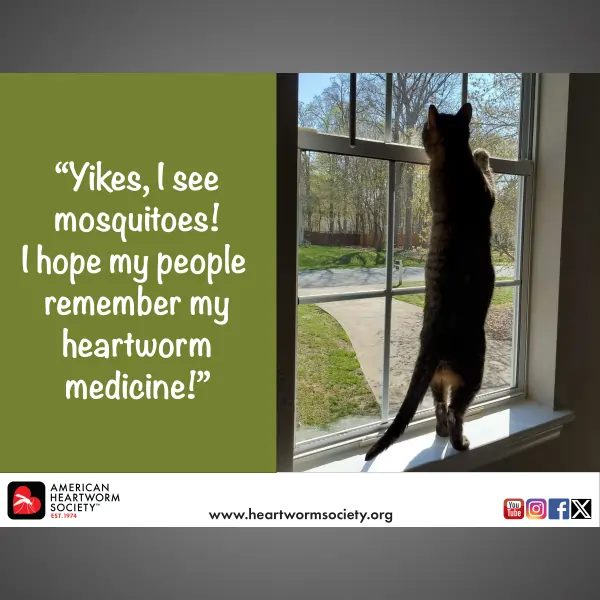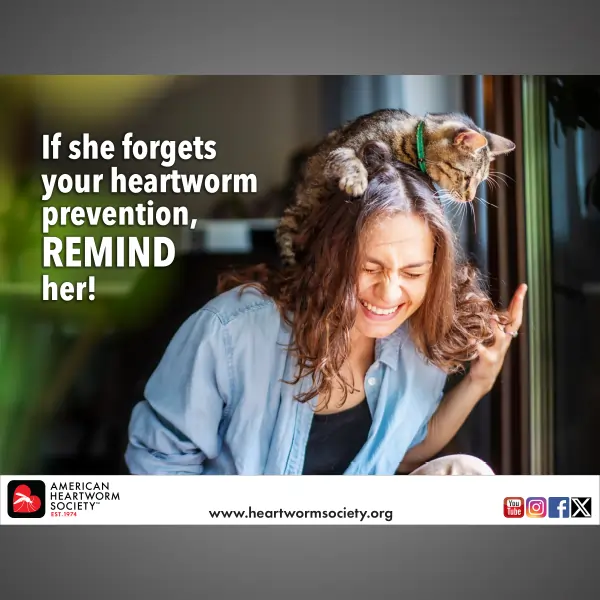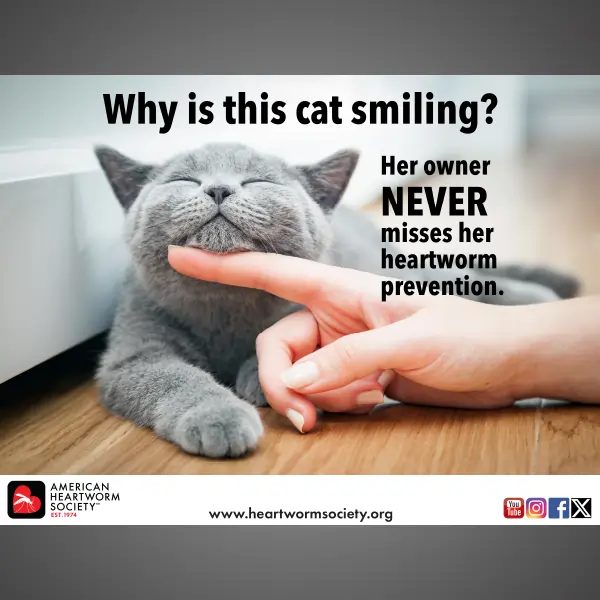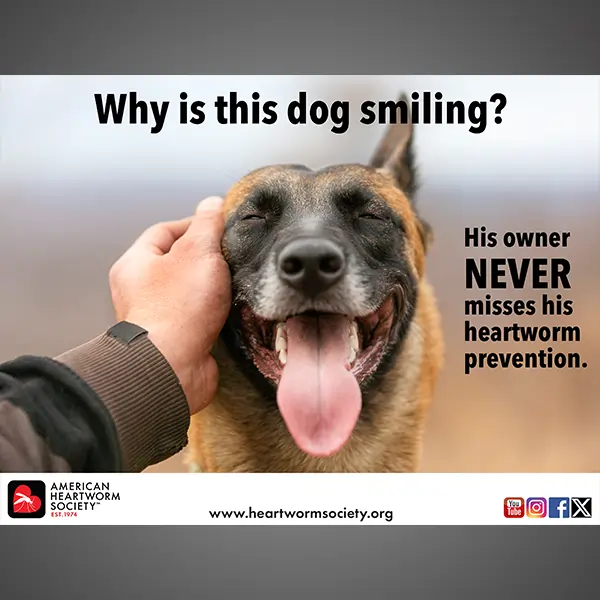Open/Download Quarterly Update as PDF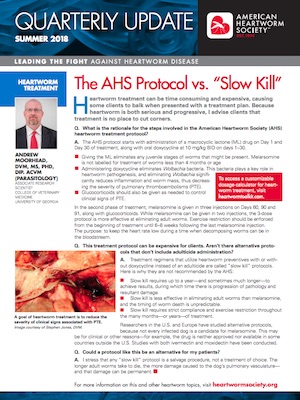
Heartworm treatment can be time consuming and expensive, causing some clients to balk when presented with a treatment plan. Because heartworm is both serious and progressive, I advise clients that treatment is no place to cut corners.
Q. What is the rationale for the steps involved in the American Heartworm Society (AHS) heartworm treatment protocol?
A. The AHS protocol starts with administration of a macrocyclic lactone (ML) drug on Day 1 and Day 30 of treatment, along with oral doxycycline at 10 mg/kg BID on days 1–30.
- Giving the ML eliminates any juvenile stages of worms that might be present. Melarsomine is not labelled for treatment of worms less than 4 months or age
- Administering doxycycline eliminates Wolbachia bacteria. This bacteria plays a key role in heartworm pathogenesis, and eliminating Wolbachia signifi- cantly reduces inflammation and worm mass, thus decreas- ing the severity of pulmonary thromboembolisms (PTE).
- Glucocorticoids should also be given as needed to control clinical signs of PTE.
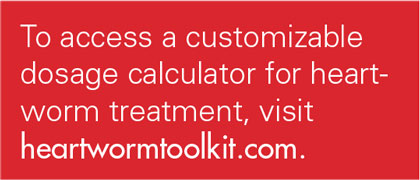 To access a customizable dosage calculator for heart- worm treatment, visit heartwormtoolkit.com.
To access a customizable dosage calculator for heart- worm treatment, visit heartwormtoolkit.com.
In the second phase of treatment, melarsomine is given in three injections on Days 60, 90 and 91, along with glucocorticoids. While melarsomine can be given in two injections, the 3-dose protocol is more effective at eliminating adult worms. Exercise restriction should be enforced from the beginning of treatment until 6–8 weeks following the last melarsomine injection. The purpose: to keep the heart rate low during a time when decomposing worms can be in the bloodstream.
Q. This treatment protocol can be expensive for clients. Aren’t there alternative protocols that don’t include adulticide administration?
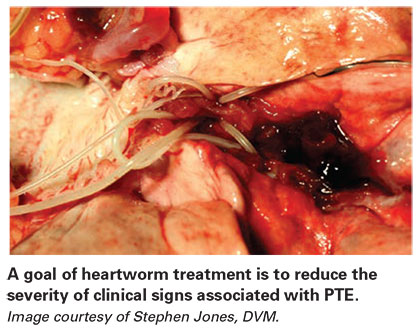 A. Treatment regimens that utilize heartworm preventives with or with- out doxycycline instead of an adulticide are called “slow kill” protocols. Here is why they are not recommended by the AHS:
A. Treatment regimens that utilize heartworm preventives with or with- out doxycycline instead of an adulticide are called “slow kill” protocols. Here is why they are not recommended by the AHS:
- Slow kill requires up to a year—and sometimes much longer—to achieve results, during which time there is progression of pathology and resultant damage.
- Slow kill is less effective in eliminating adult worms than melarsomine, and the timing of worm death is unpredictable.
- Slow kill requires strict compliance and exercise restriction throughout the many months—or years—of treatment.
Researchers in the U.S. and Europe have studied alternative protocols, because not every infected dog is a candidate for melarsomine. This may be for clinical or other reasons—for example, the drug is neither approved nor available in some countries outside the U.S. Studies with both ivermectin and moxidectin have been conducted.
Q. Could a protocol like this be an alternative for my patients?
A. I stress that any “slow kill” protocol is a salvage procedure, not a treatment of choice. The longer adult worms take to die, the more damage caused to the dog’s pulmonary vasculature— and that damage can be permanent.
For more information on this and other heartworm topics, visit heartwormsociety.org.



